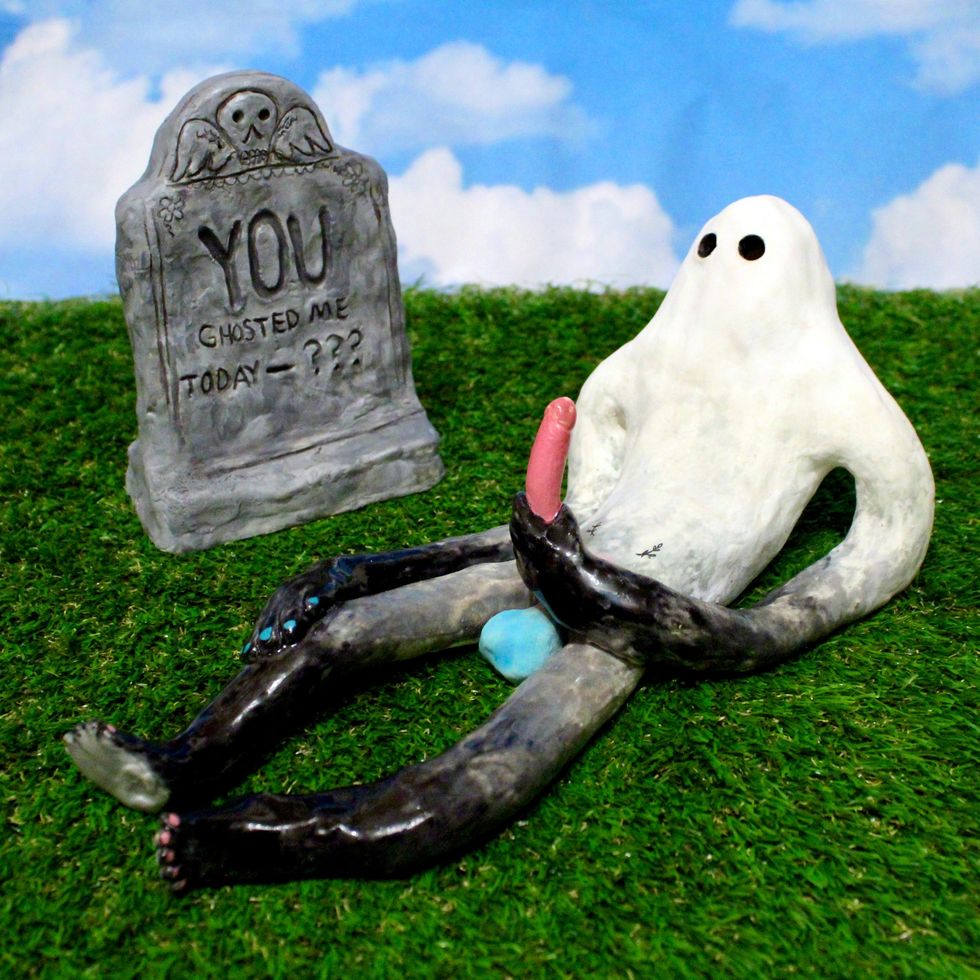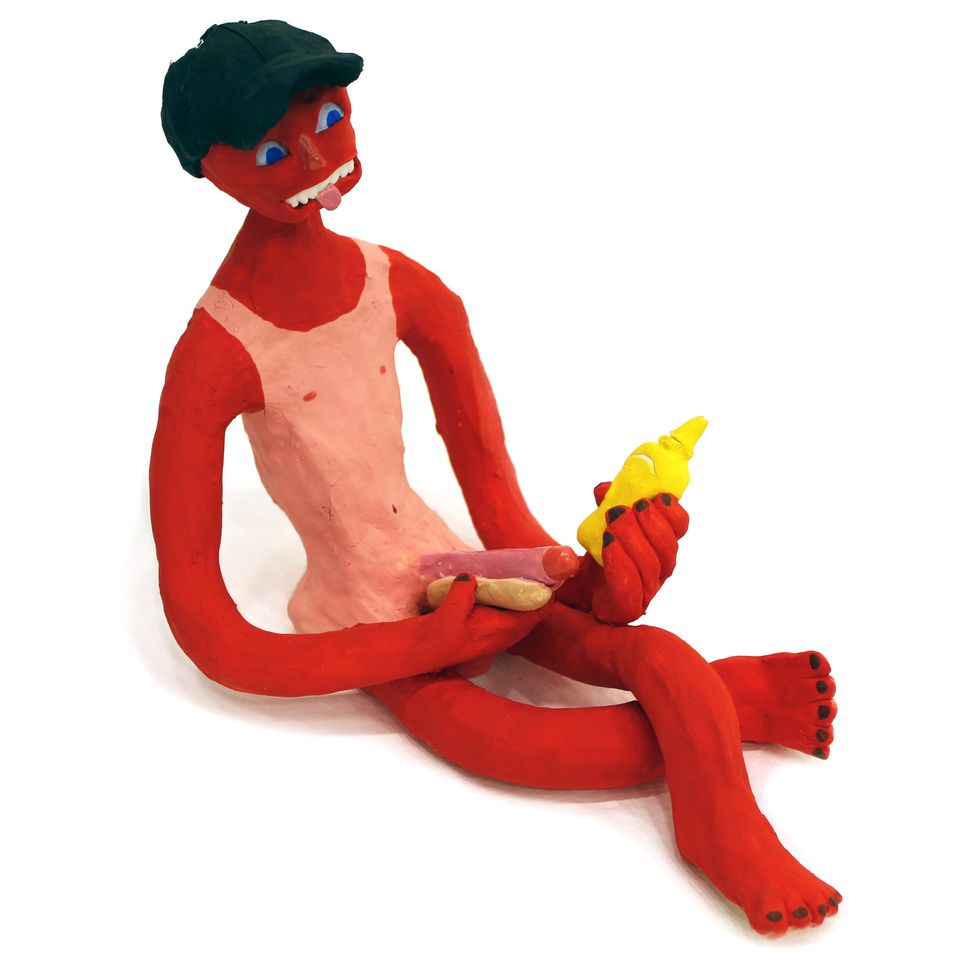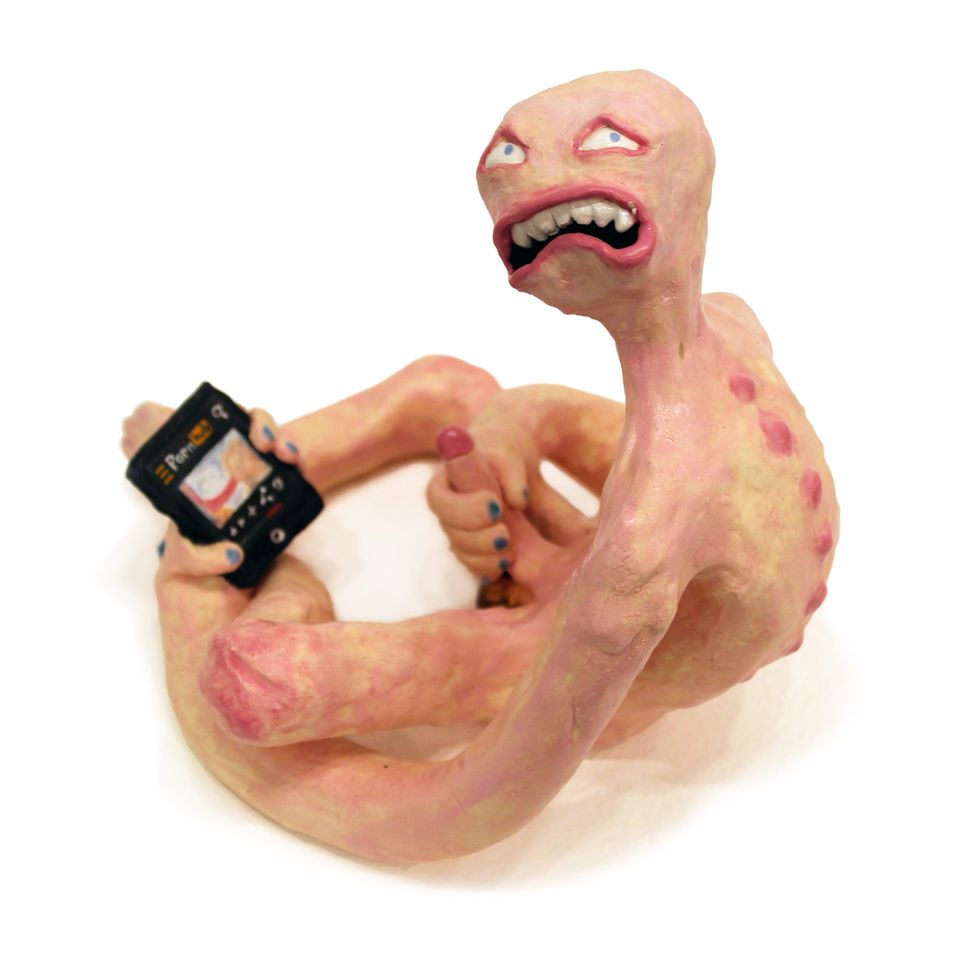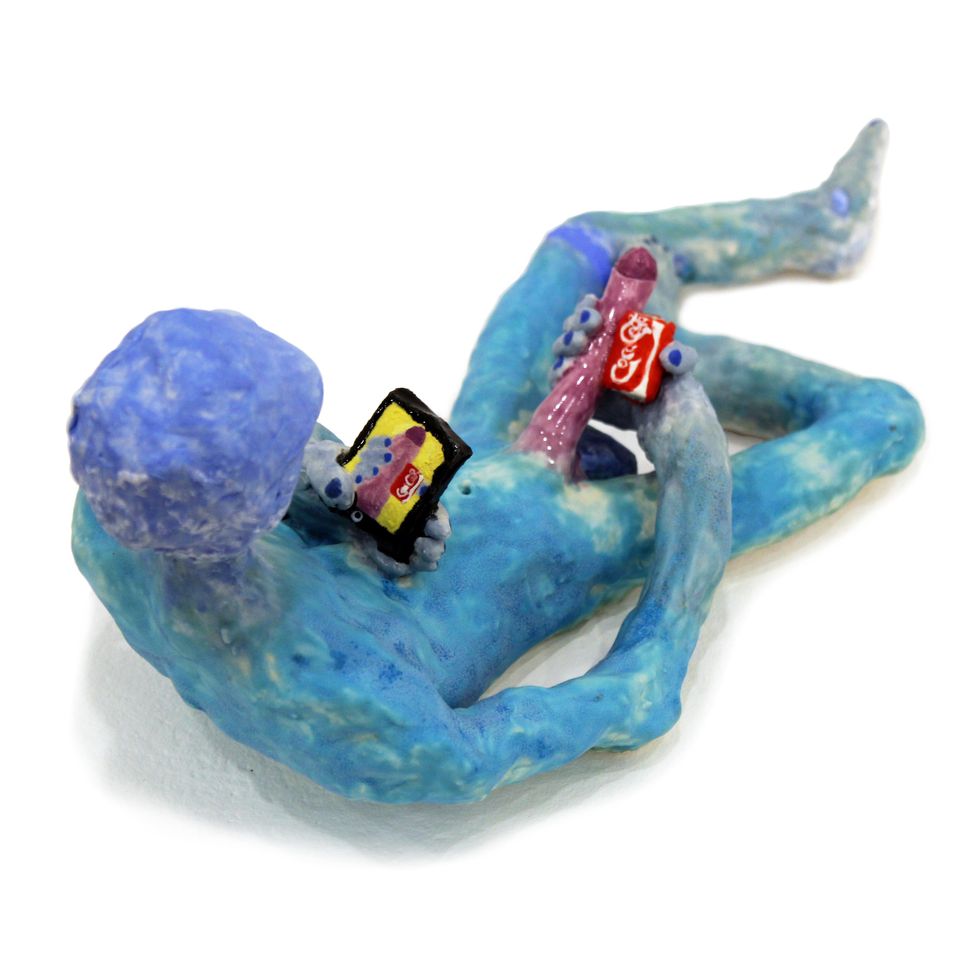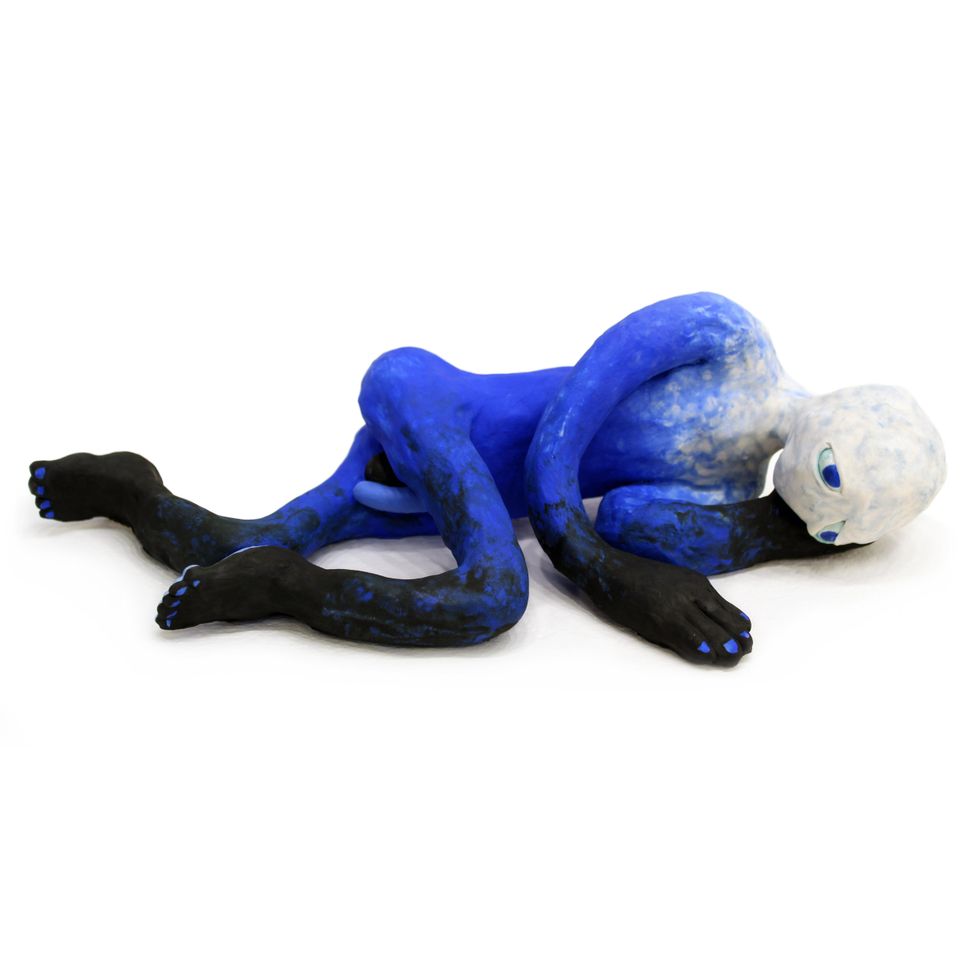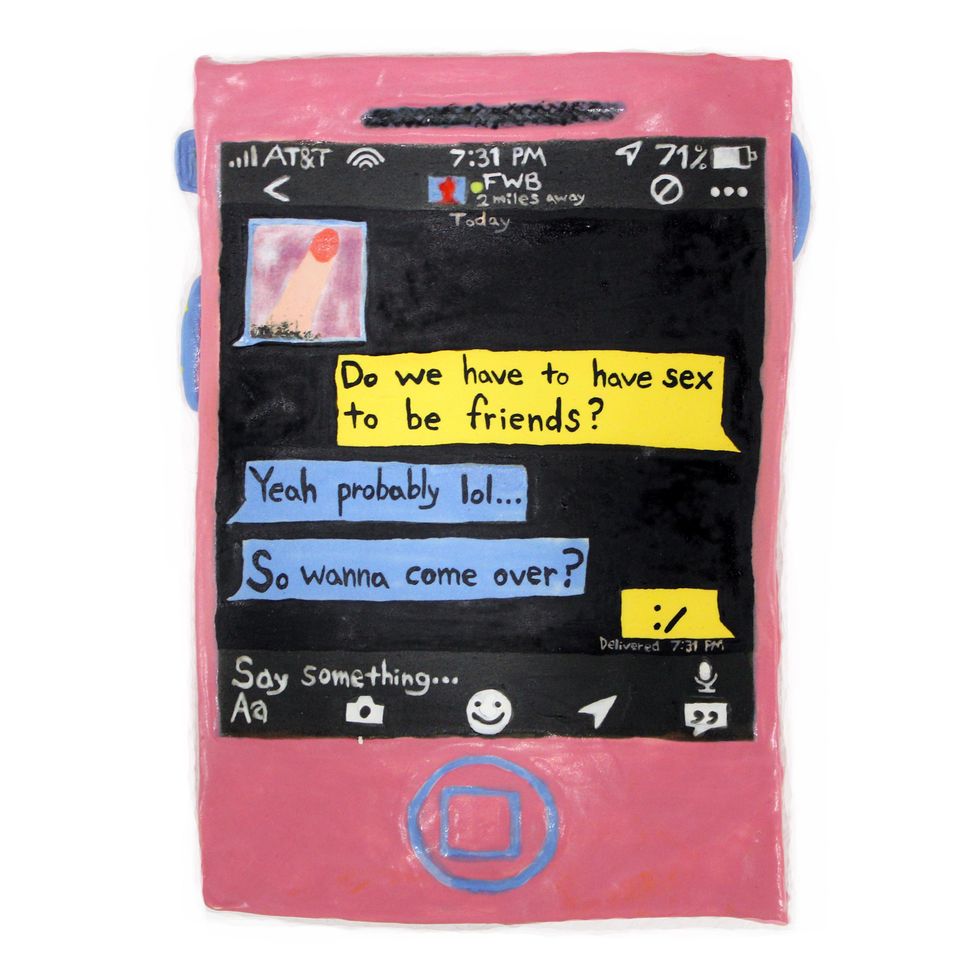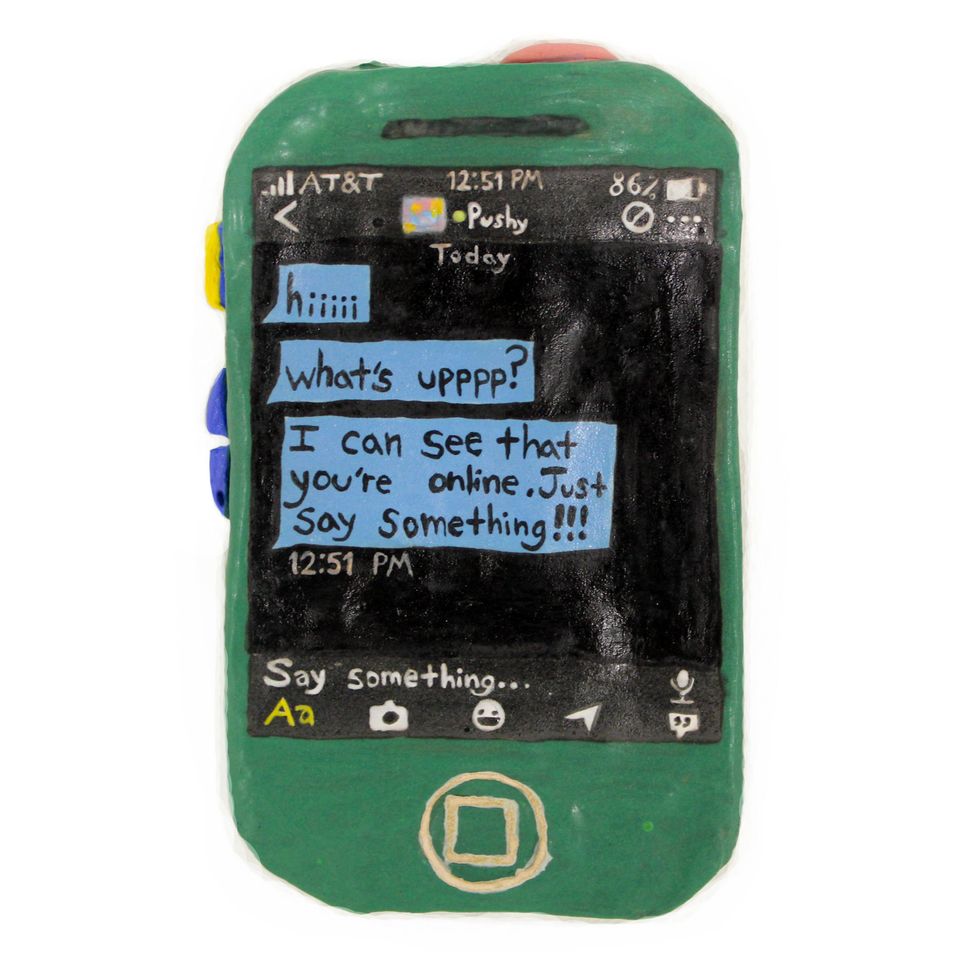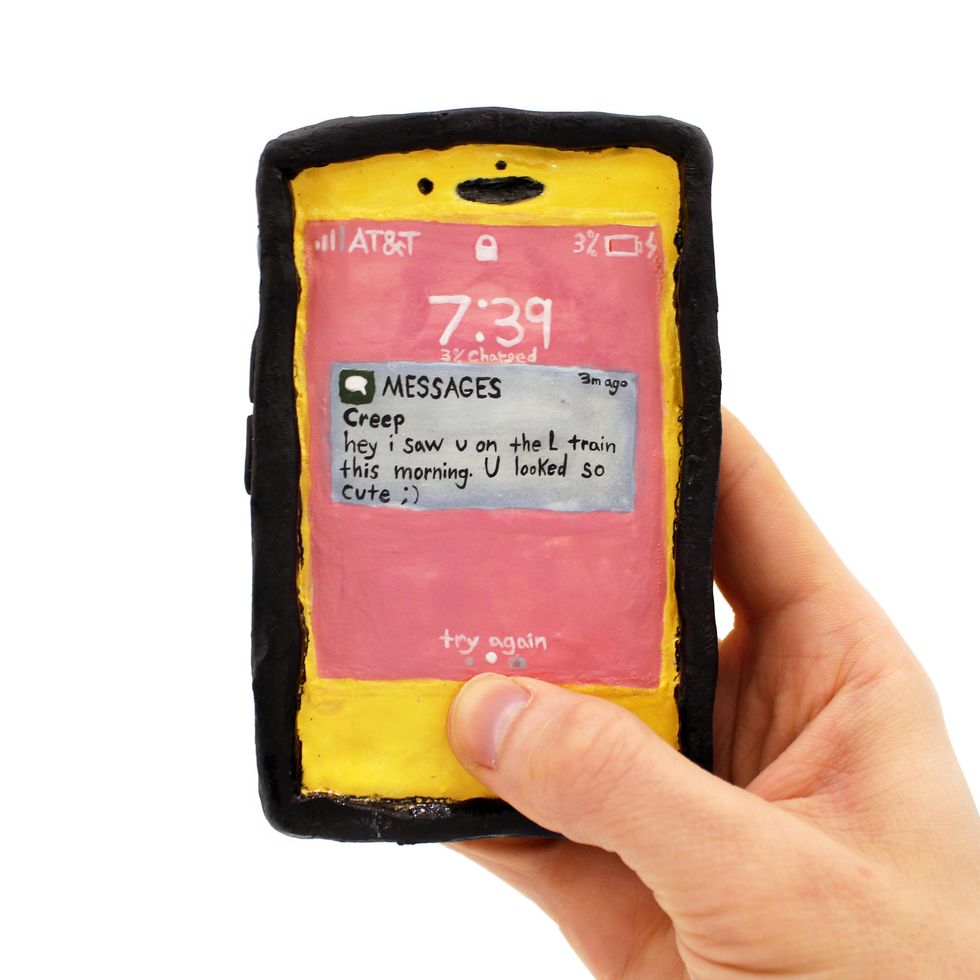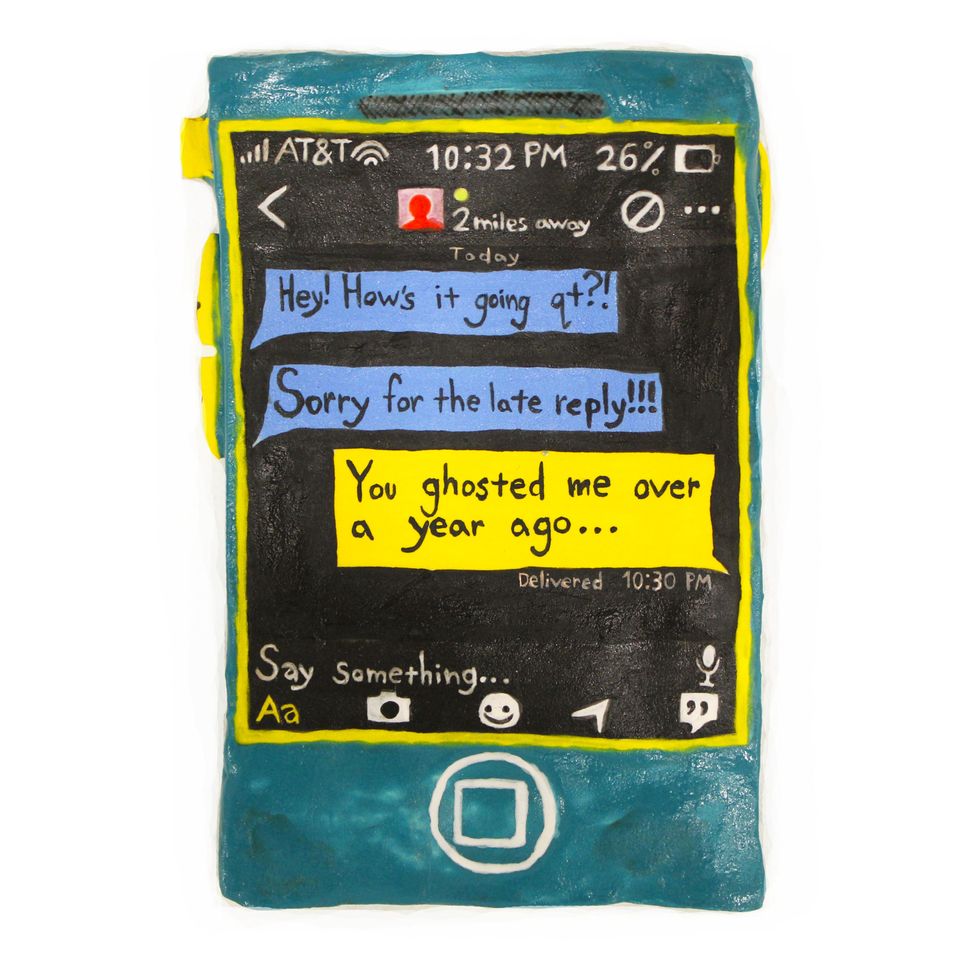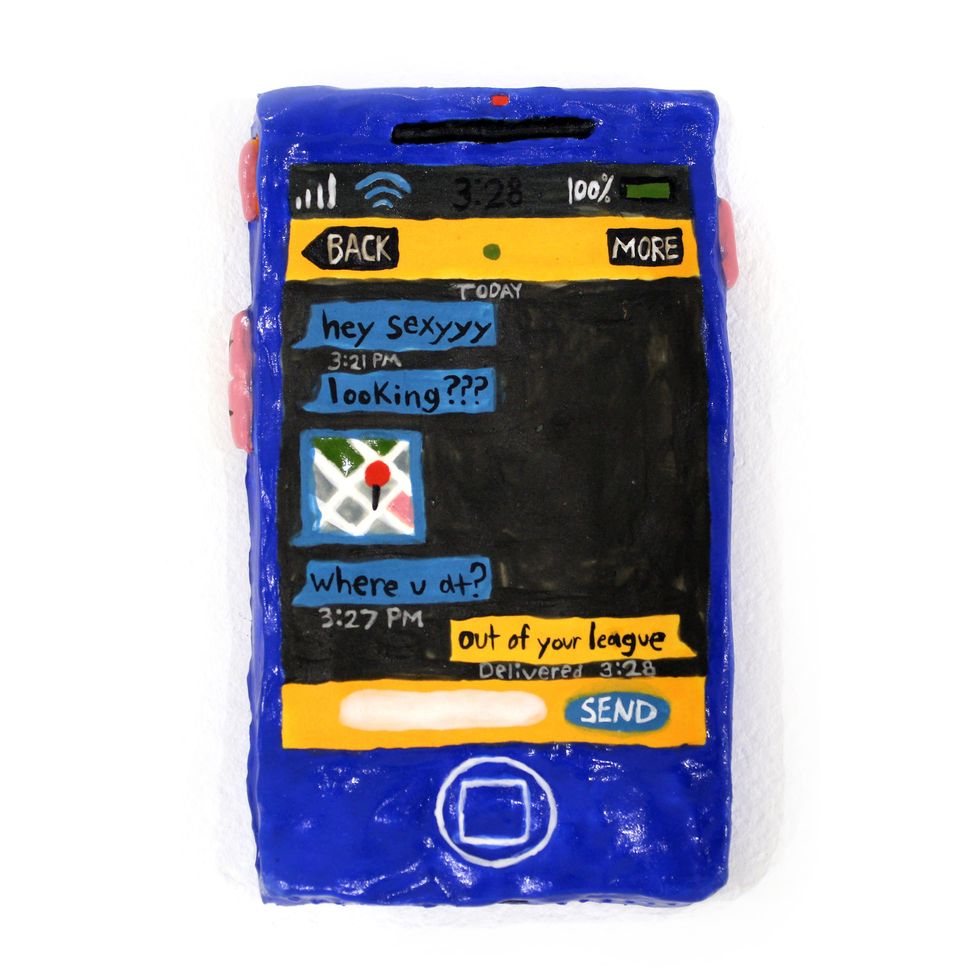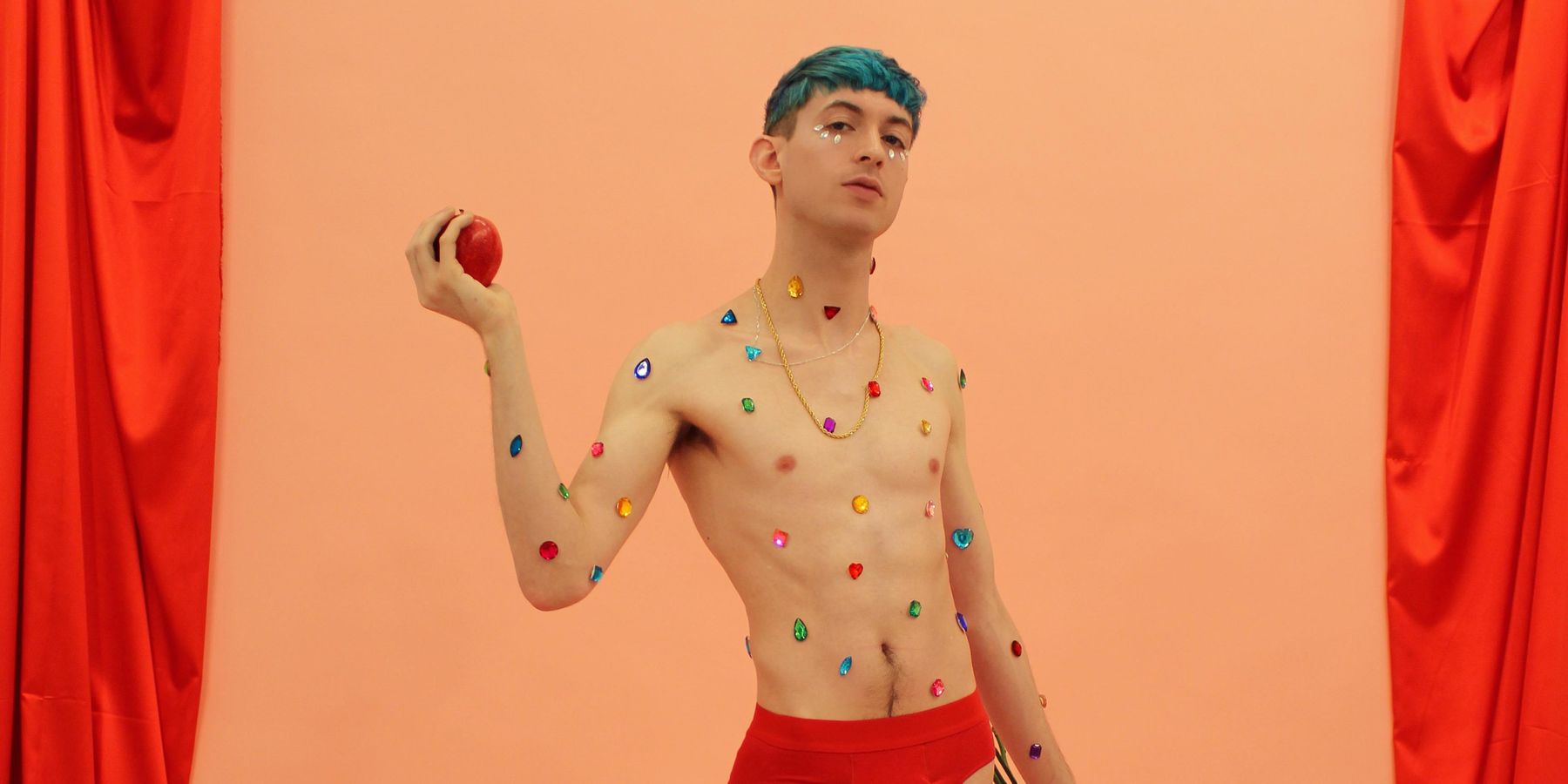
When Colin Radcliffe was three, he drew Eric Carle's The Very Hungry Caterpillar on his kitchen wall using paint markers. While most parents would be furious, Radcliffe's were "so impressed" with its accuracy and left the drawing for years until moving to a new house. This naive moment, which Radcliffe credits as his first experience making art, has followed him into adulthood, with "humor, color and playfulness" remaining cornerstones of his current practice.
Over the years though, Radcliffe says the themes and content of his art have naturally matured as he's grown into his queer identity. "I've carried and refined the childlike qualities in my work with its playful forms and bright punchy colors," he says, "and fused that with mature themes and experiences like sex, heartbreak and identity."
Now, Radcliffe makes "autobiographical" art about his own relationships, especially within a digital context. Largely divided between two bodies of work — ceramic lovers and ceramic phones — he says each piece "is a record or an ode to an ex-lover, and my memories and feelings of them." Some are darker, coping with heartbreak or guilt, and others are lighter to address "love, adoration, affection, tenderness and intimacy."
In many ways, this is all Radcliffe's response to the way he was raised. "Growing up, sex was never discussed," he says. "Being queer, your 'coming-of-age' happens more so in your twenties than your teens, so making work about queer sex and intimacy is a way for me to now embrace my identity, while exploring sex and love and my body in ways I couldn't before." The "sexual explicitness" of Radcliffe's sculptures, then, are as much a "rebellion" to his upbringing as they are a "celebration" of his life today.
Radcliffe's ceramic lovers are colorful, gangly figures depicted in the nude. One is shown watching Pornhub on its cellphone with a face of dismay, and another is placing its dick inside a hot dog bun in preparation to slather it in yellow mustard. A lonely ghost sits with blue balls — literally painted blue — next to a tombstone that reads, "You ghosted me today," while a skeleton captures the perfect low-angle dick pic. "The balance between sex and humor is as natural to me as it is purposeful," Radcliffe says. "I rely on humor as a catalyst to talk about and heal from trauma, and other intense or difficult experiences."
Pulling from ideas surrounding social media and dating apps, Radcliffe's cellphone sculptures intend to highlight the origin of his love affairs. With displayed messages like, "You only ever want to see me after midnight," to, "I saw you on the L train this morning," they reflect our over-reliance on technology to "find and form" modern love. "The ceramic phones started partially as an acknowledgement of my own behavior, but also as a way to be more honest and direct about my experiences as a young queer person navigating relationships today," he says, specifically referencing Grindr and Scruff as replacements for physical cruising spaces like bars and clubs.
All of Radcliffe's art starts with a "romantic, platonic or sexual" experience, before he begins sculpting. "I don't make work if I don't have an emotional connection to it," he says, adding that his process typically opens with sketches that pull from real-life references: Tattoos, expressions, texts, poses, a bag of Cheetos. He sculpts "intuitively" and exclusively by hand without tools — a process that has deeper meaning to Radcliffe. "Porcelain is an especially impressionable clay body," he says. "It remembers every way it's been pushed and pulled and touched. So working directly with my hands — the same hands that held and caressed a lover — allows me to imprint into the clay a feeling or a memory directly."
Below, PAPER gets to know Colin Radcliffe even more intimately: his most recent saved photo, most recent Google search, texts with ex-lovers and more.
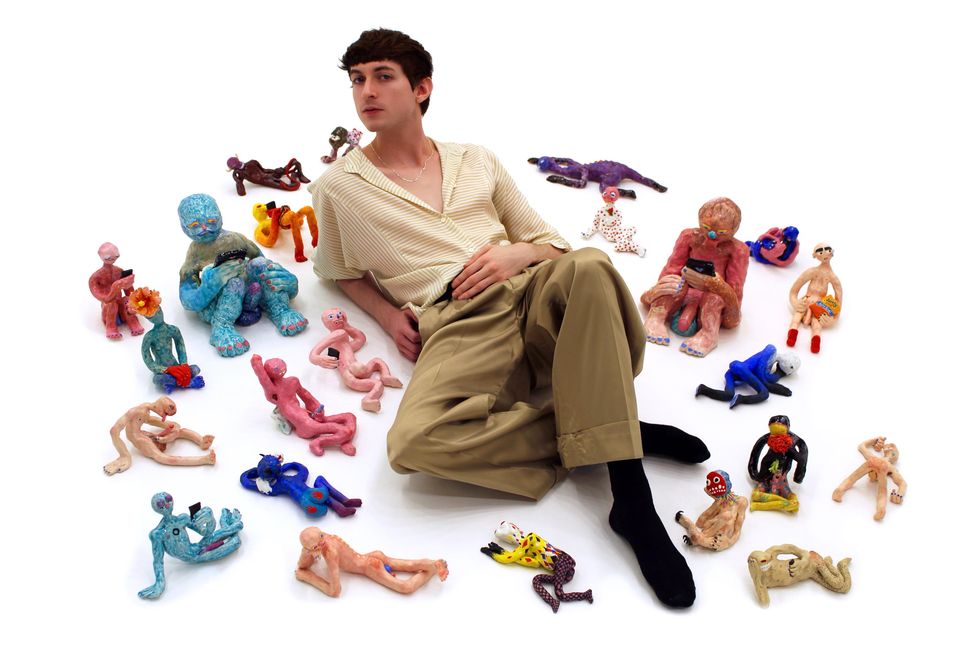
Describe the last photo saved on your phone.
My breakfast! An avocado toast made into a funny face. It's a slice of toasted sourdough with garlic hummus as a mouth, with pumpkin seeds for teeth and a dollop of hot sauce for a tongue. The nose is a slice of red onion and the ears are scrambled eggs, and then for the eyes it's two halves of an avocado with a pool of hot sauce and black cherry tomatoes where the avocado pit was, all over a big salad.
Your Instagram bio says, "You wouldn't believe the day I've had." Tell me about your day.
I woke up.
What's the most important thing to remember when taking a selfie?
Feeling yourself, but good lighting is a close second.If you could collaborate with anyone right now, who would it be?
There are many, but right now I'd say Katie Stout. I've loved her work for years, but a mutual friend of ours, Jeremy Kost, recently introduced us over text. We both work figuratively and deal with sex and the body, saturated color, and playfulness and humor, with Katie's work often having a functional component like the work doubling as a lamp or a toilet paper dispenser. I imagine we'd have a lot of fun collaborating on a sculpture and I'd be curious what sort of functionality the piece might have. Would it be a fountain? A lamp? A dildo?
Have you texted an ex-lover yet in quarantine? If so, how'd that go?
Of course, even without the quarantine I still would've texted some of my ex-lovers. I keep in touch with many of them actually. Some of them are good friends now and others we just check in on each other from time to time.What's your most recent google search?
"quelle est la différence entre épicé et pimenté?"
What's the last thing you do before you go to bed?
I drink a giant mug of chamomile tea, while writing my to-do list for the next day.
What are you listening to, right now?
Right now, mostly a few french artists like Yseult, Angèle and Joanna.
What's the role of an artist in 2020?
Artists are just people and can fill any role that any person can in any field. Freedom of choice and expression is at the base of being artist, and what role an artist takes is pretty individual. I think, especially in 2020, it can be dangerous to look at artists as moral or ethical pillars who hold up a mirror to society and critique the problems in it. Artists are great visual storytellers, but less great historians. We still express our own bias through our work, and often edit our own narratives to better fit an idea or message we have. An artist's work can be a record of society at a given time, but the responsibility of political and social criticism and of cultural record-keeping shouldn't just fall on artists. It's on everyone to be active, thoughtful and educated.
Photos courtesy of Colin Radcliffe
From Your Site Articles
- Auguste Wibo's "RUB IT" Puts the Dickprint on Display ›
- Auguste Wibo's "RUB IT" Puts the Dickprint on Display ›
Related Articles Around the Web
